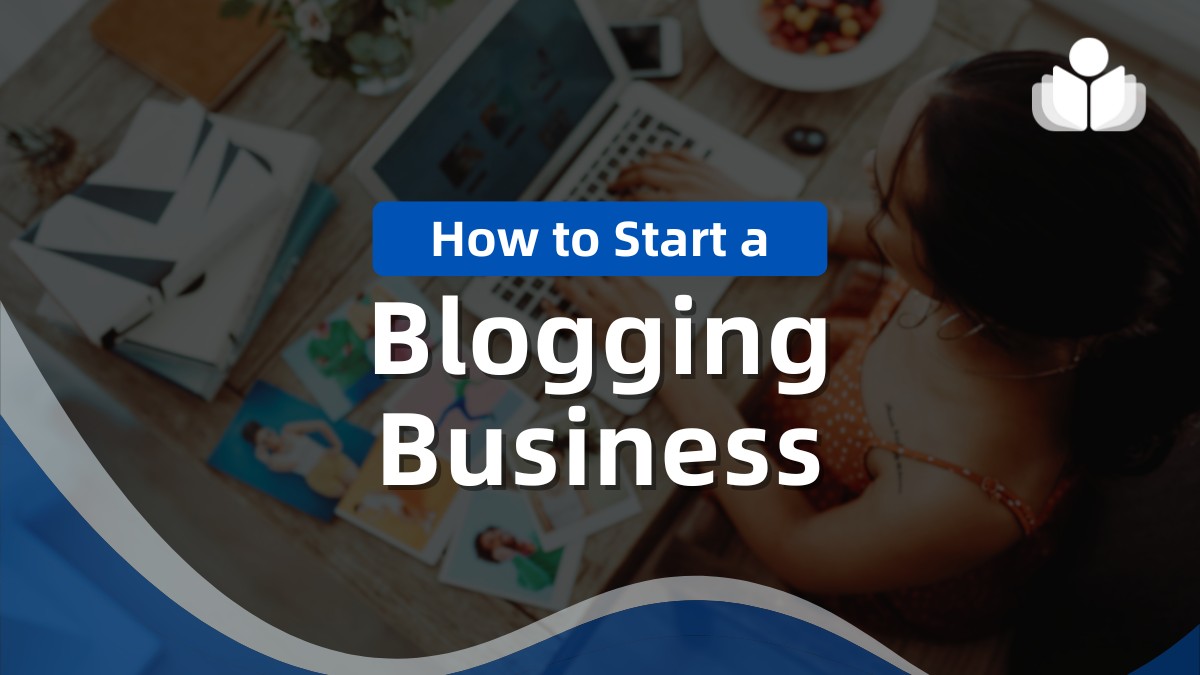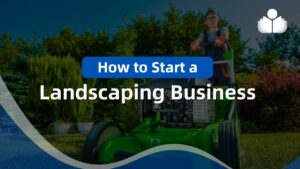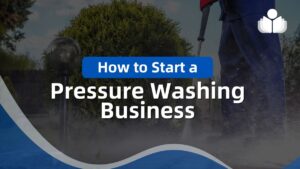If you’re looking to start a blog, you’ve found the right resource. Blogging is a great way to improve your writing, explore new ideas, and establish an online presence based on your interests and expertise.
As your blog grows, you can even monetize it or use it to launch a business. Starting a blog is the first step toward pursuing your dream job or favorite hobby. While it may seem overwhelming,
We’ll guide you through each step to ensure a smooth and successful process. You’ll have your blog up and running, with your first post written, in no time. This guide provides all the tools and instructions necessary to start and write for a blog, from creating your website to attract loyal readers. Ready to get started? Let’s begin.
>> Start a Blogging Business With Tailor Brands >>
What Is a Blog?
A blog comprises regularly updated content focused on a specific topic, distinguished by its personal tone, fostering deeper audience connections. Reasons for starting one’s own blog vary and may include:
- Individuals use social media platforms to express thoughts, interests, or personal experiences
- They educate others by sharing their knowledge
- They aim to grow their email subscriber base
- People work on establishing themselves as authorities in their field
- They seek opportunities to generate income through internet channels
- These objectives can be pursued individually or in combination
Consistency in frequency and content type is crucial for blogging, whether you choose to post daily, weekly, or monthly. It’s essential to stay motivated in the initial stages as results typically take time to materialize, despite the satisfaction of having strangers engage with your content.
Pros and Cons of Launching a Blogging Business
Pros
- Low Startup Costs: Starting a blogging business idea requires minimal initial investment, primarily involving purchasing a domain name, securing hosting services, and dedicating time
- Flexible Work Schedule: Blogging offers a flexible work schedule, enabling you to work from any location with internet access, appealing to those prioritizing work-life balance
- Creative Freedom: Bloggers enjoy the liberty to create content on subjects they’re passionate about, showcasing their creativity and sharing knowledge and experiences
- Multiple Revenue Streams: A thriving blog can generate revenue through various channels such as advertising, affiliate marketing, sponsored content, and selling digital products or services
- Building an Online Presence: Through blogging, individuals can establish an online presence and personal brand, paving the way for additional opportunities such as public speaking, book deals, and consulting engagements
Cons
- Time-Consuming: Time and effort are required to build a successful blog, especially at the start. Growing your audience and earning significant income can take months or even years
- Inconsistent Income: Blogging income can be unpredictable, influenced by factors like website traffic and advertising rates. This unpredictability makes financial planning difficult
- SEO and Technical Challenges: Understanding SEO and staying updated with the latest algorithms is crucial for bloggers. Managing website technicalities can also be overwhelming for some
- High Competition: The blogging sphere is fiercely competitive, with millions of blogs vying for attention. Standing out demands unique content, marketing skills, and persistence
- Vulnerability to Changes in Technology and Trends: Technology and trends evolve constantly in the digital realm. Bloggers must stay informed and adaptable to keep their strategies effective
How to Start a Blog in 9 Steps
- Choose a blogging platform: Opt for a blogging platform offering customizable templates
- Pick a hosting platform. Choose a hosting platform with good bandwidth, uptime, and customer support
- Find the right niche. Narrow down your theme and target audience to find the right niche. Choose a descriptive business name and domain to capture readers’ interest
- Select a blog name and domain. Opt for a descriptive name and domain to capture readers’ interest
- Set up and design your blog. Design your blog with imagery and effects reflecting your theme
- Brainstorm blog topics. List all your ideas for blog topics before narrowing them down
- Write your first blog post. Capture your audience’s attention with a compelling title and use headers for easy skimming
- Create an editorial calendar. Establish an editorial calendar to maintain consistency and accountability
- Promote your blog. Employ marketing strategies to broaden your blog’s reach
- Make money blogging. Explore opportunities to monetize your blog effectively
>> Start a Blogging Business With Tailor Brands >>
Choose a Blogging Platform
To start a blog, choose a blogging platform or Content Management System (CMS) for publishing your content. Various sites cater to bloggers from different industries. Many potential bloggers struggle to decide between a self-hosted or hosted platform.
Self-hosted
Typically, these platforms give you more ways to customize, but you must host the site independently through a hosting company for an extra monthly fee. Besides this expense, setting up a web hosting plan is needed. WordPress is the main open-source platform for self-hosting.
Hosted
Selecting a platform involves choosing one that suits your needs. For instance, Shopify provides hosting with all plans, facilitating quick blog setup. However, unlike Shopify, other hosted sites such as Blogger or Wix restrict customization options.
- Simple to use
- No need for coding or HTML expertise
- Can expand alongside your business
As you progress in your blogging venture, you might feel the need to change your site’s appearance and features. This becomes crucial as your brand develops, your traffic increases and your content expands. Choose a blogging platform that provides a wide range of plug-ins and apps. These tools can enhance your site’s functionality by optimizing performance, facilitating backups, promoting your blog, and streamlining tasks.
How Much Does It Cost to Start a Blog?
When investigating how to start a blog, many wonder about the initial costs involved. Starting on most platforms is free, with the option to upgrade to different plans based on your budget and requirements.
>> Get Started With Tailor Brands >>
Pick a Hosting Platform
After picking your favorite blogging platform, the next step is selecting a hosting provider. Just like any website, a blog needs a host to store it on a server with a unique address for visitors to access easily.
If your chosen blogging platform includes hosting, you can proceed to Step 3. However, for platforms like WordPress, you’ll have to find and pay for a separate hosting service. Common choices include:
- BlueHost
- HostGator
- GoDaddy
- DreamHost
Consider these factors when choosing a web hosting platform:
- Uptime: Your website’s server is up and running is uptime. A strong uptime rate (99.95% or above) indicates good server performance.
- Bandwidth: The amount of data your website can transfer to visitors over time is bandwidth. It depends on your website’s page size and expected traffic. Use this quick bandwidth calculator to find out your site’s bandwidth.
- Customer support: If something goes wrong, you can reach out to customer service. Your hosting provider should ideally have an online help center, offer callbacks, and respond to questions and concerns on social media.
After selecting your blogging platform and hosting provider, begin brainstorming your blog idea.
Find the Right Niche
Moving away from the technical, let’s delve into the theoretical. Take a moment and consider the core element shaping your blog’s foundation, encompassing its URL, domain name, content, and design: your blog’s niche. What specific topic do you envision your blog revolving around?
Your choice of subjects is virtually limitless. The key is to select a distinct topic that will serve as the central theme for your entire blog and its content strategy. Whether it’s fashion, real estate, books, or food, your blog niche should stand out amidst others in the same field, all while aligning with your interests.
Here are three straightforward steps to help you select the ideal blog niche, one that not only reflects your passions but also offers potential for monetization and growth:
Narrow Down Your Interests
Starting a blog requires long-term thinking. To maintain regular blogging, focus on topics that genuinely interest you. Avoid choosing topics solely for popularity or profit; otherwise, your blogging efforts will fade quickly. If unsure about what to blog about, start with a brainstorming session. Identify subjects you enjoy discussing and topics you’re eager to learn more about.
Research Your Audience
Learning what topics people want to read about is the next step in starting and building a blog. If your blog becomes popular, you can make money from it and become a full-time blogger. To find out if there’s demand for a certain niche, do some market research.
Start by checking Google Trends, which tells you how many people are searching for a topic. The more searches a topic gets, the more demand it has. If Google Trends shows low or declining interest in a subject, it’s unlikely to gain traction.
Check If It’s Profitable
Whether you manage a personal or professional blog, it’s wise to assess if your niche can generate income. Even if you start as a hobbyist or aim for a fan site, consider future earning potential in case your blog evolves into a career.
One common way bloggers earn is through affiliate marketing. As an affiliate, you collaborate with a company, sharing product links on your blog and earning commissions for sales generated.
Exploring blogging as an affiliate can help gauge niche profitability. Imagine crafting “best of” or “how to” posts like “Top kitchen gadgets for easy cooking” or “Quick carrot cake recipe.” Including affiliate links to recommended products can generate income from blog-related purchases.
While you needn’t finalize your earning strategy, contemplating profitable avenues aids in niche selection.
Select a Blog Name and Domain
When considering how to create a blog, what to name it is likely on your mind. You have three main options for your blog’s name. These choices include:
- Your full name
- The name of your business (if applicable)
- An innovative new name
When selecting your blog’s name, also consider the personality you want it to convey. Do you want it to be formal and professional? Sweet and romantic? Edgy and unconventional? Once you decide, proceed to choose your blog’s domain name.
Also known as a URL, a domain serves as a site’s web address (for instance, this website’s domain name is www.wix.com). Typically, your domain name will match, or at least be influenced by, your blog’s name.
Set Up and Design Your Blog
When considering how to create a blog, you may wonder what to name it. You have three options for your blog’s name. Now that you’ve selected a blogging and hosting platform, domain name, and blog niche, you have everything you need to set up your blog. Here’s how to improve your blog design.
Choose a Blog Template
Selecting a template is the initial step in starting a blog. The appearance of your blog, like its name, defines its personality. Opting for a pre-designed template is the quickest method to launch your blog. Then, customize it to suit your preferences.
Ensure the chosen template aligns with your blog’s topic. Templates cater to various blogging niches, be it food, photography, or business. Consider the mood you want your website to convey, whether it’s classic, modern, rugged, or minimalist.
Factor in color psychology when personalizing the template with your preferred colors. Color choice significantly impacts your audience’s perception of your blog. Different colors evoke distinct emotions and attitudes. For example, blue symbolizes dependability and trust, while yellow exudes energy and joy.
Decide Which Pages to Include
After selecting a template, consider which pages to include. Blogs typically feature more than just a section for posts. They may also have an online store or a contact page.
To expand your blog, consider adding pages like Tutorials, Now Trending, or Author’s Pick.
Some blogs display posts directly on the homepage, while others keep home and blog pages separate. If you choose the latter, include a navigation menu for easy access to your blog and other pages. Remember, you can adjust pages as your blog grows.
Ensure your blog is indexed on search engines. Submit your sitemap to Google Search Console to notify Google about your blog’s existence.
Pro tip: The Google Search Console serves a dual purpose: indexing your site and providing essential insights for your blogging journey. It furnishes crucial data on site visitors and clicks, aiding in content enhancement.
Create a Blog Logo
Enhance your website’s appeal by adding an eye-catching blog logo. It adds personality and is crucial for building a recognizable brand. You can design it yourself, outsource the task, or use an online logo maker. These tools offer customization options with your chosen colors, fonts, and icons.
After creating your logo, position it in the upper left-hand corner of your site and link it to your homepage to improve navigation and brand consistency for your readers.
Brainstorm Blog Topics
Your blog is set up and ready. Now, consider what topics to explore. Reflect on your experiences and ideas related to your niche. What insights can you offer? What do your readers want to know? Ask yourself these questions to brainstorm potential topics.
- What are the traits of my target audience?
- What topics interests my target audience?
- What difficulties does my target audience encounter?
Utilize the topic cluster model to generate ideas. This system organizes related posts with internal links. Consider a broad topic, such as recipes, then break it down into smaller subtopics like dinner recipes or brunch recipes.
Further divide these into specific topics like 20-minute dinner recipes, mimosa recipes, and cake decoration ideas. Each topic can become its own blog post.
>> Start a Blogging Business With Tailor Brands >>
Write Your First Blog Post
With ideas in mind, it’s time to start writing your blog post. Let’s explore writing a blog post step by step.
Start With Keyword Research
Discovering appropriate keywords plays a vital role in attracting readers to your articles. Focusing on specific phrases enhances the likelihood of your blog appearing in search results for those queries.
Certain keywords may be readily apparent based on your topic. You can fine-tune your keyword selection using free tools like Google Keyword Planner or opt for more comprehensive paid solutions such as SEMrush or Ahrefs.
Outline Your Main Points
Keyword research helps determine the blog post’s structure and content sections, guiding the outline creation. Begin by selecting the blog post type: instructional, product review, or opinion piece.
With your chosen template in mind, organize the outline using headers and subheaders. Beneath each heading, jot down key points for each section to create the initial blog post framework.
Come up With a Blog Post Title
Generating a powerful title is the next step in initiating a blog post. Blog titles can be planned at any planning phase, but the most effective concepts often emerge during outline development. A blog title holds significant influence, determining whether individuals choose to click on your article.
To craft captivating and engaging blog titles, consider your readers’ perspective. Ponder on what could capture their interest and enthusiasm, and experiment with the following techniques:
- Communicate clearly and straightforwardly
- Ensure the reader understands the value you offer
- Connect with your reader emotionally
- Spark their interest and make them curious
- Employ humor, alliteration, or wordplay when appropriate
Write Engaging Content
Begin typing now. Remember to include an introduction, body text with headers and subheaders, and an optional conclusion.
In the introduction, seize your audience’s attention with an engaging anecdote, a persuasive quote or statistic, or an intriguing fact. Then, summarize the article’s topic, ensuring it piques the interest of your readers.
Compose the body text using your outline as a roadmap. Share your expertise and insights as a blogger, avoiding unnecessary verbosity. Each sentence should offer value, delving directly into sharing your original insights and practical tips. Adapt your tone to resonate with your audience, whether it’s lighthearted and conversational or formal and authoritative.
Conclude the post with a final section. Although not mandatory, it serves as a cohesive wrap-up, allowing you to unify your ideas and convey closing remarks. Remember, crafting a blog post is a time-consuming endeavor that requires patience. Allocate sufficient time, ideally half a day, to draft your initial version.
Insert Images
When beginning your blog, keep in mind that the images you select can enhance readers’ understanding of your article. Whether you include photos, screenshots, or illustrations, ensure they serve a purpose and are visually appealing. They should effectively communicate your main ideas and emphasize key examples in the post.
If you lack personal images, start by exploring free stock photo websites online. Pexels and Unsplash are commonly used platforms for sourcing visual content. While you may aim to incorporate your own photos eventually, stock photos offer a convenient option to kickstart your blog.
Optimize for SEO
After creating your content, you must address a few tasks before publishing. These steps mainly involve strategy, such as enhancing your blog SEO and driving conversions through your article. Here’s a brief checklist to follow after writing:
- Double-check your keywords: Check your content quickly (CTRL+F) to see if you used your keywords. Make sure you include all intended keywords. If not, find opportunities to add them naturally throughout your article. Remember, avoid keyword stuffing as it’s frowned upon by search engines.
- Add internal links: Link your blog posts together to improve SEO and encourage readers to explore more articles. Link primarily between related posts rather than randomly. If you’re new to blogging, go back to add links to older posts as you build your content.
- Incorporate CTAs: Include calls-to-action (CTAs) in your article to prompt readers to take action like buying products, subscribing, or reading more. CTAs are phrases like “Buy Now,” “Subscribe,” or “Read More.”
- Use alt text: Add a brief description to your images, known as alt text, to help Google understand their content. Use keywords in alt text to enhance your images’ visibility in Google image searches.
- Write your post’s metadata: Craft metadata, including the meta title and description, to improve your page’s appearance in Google search results. Ensure your title is engaging and includes important keywords. The meta description should also feature keywords and summarize your article’s key points.
- Choose your URL: Choose a strong URL for your blog posts containing relevant keywords to boost your search engine ranking.
Edit and Publish
You have all the necessary components for your initial blog post. Review it multiple times and ask family or friends for feedback. Having additional sets of eyes is beneficial.
Once you believe your article is prepared, post it on your blog. Your blogging platform will provide fields for entering metadata and the URL. After completing these steps, click Publish to begin the festivities.
Create an Editorial Calendar
After writing your first blog post, take a break. When you’re ready, plan the rest of the month’s posting schedule.
Creating an editorial calendar is vital for starting a blog. It ensures consistent content publication, holding you accountable and aligned with your blogging goals. Readers expect fresh content, and you must deliver. Search engines also consider your publishing frequency for site ranking.
If you haven’t already, brainstorm topics in Step 6. Once you have around 10 ideas, begin constructing a content calendar.
Your calendar can be made using Excel or Google Sheets. Customize columns for publishing dates, blog titles, keywords, article status, and comments.
How Often Should You Blog?
When discovering how to initiate a blog, many wonder about the frequency of posting new content. Typically, increased blogging correlates with higher website traffic. Although an exact frequency isn’t clear-cut, studies provide valuable insights.
- Small businesses with 10 or fewer employees saw double the traffic when they posted at least 11 blogs monthly compared to those posting two to five blogs
- Small businesses discovered that posting at least 11 articles every month generates twice as many leads compared to those posting six to 10 articles monthly
>> Get Started With Tailor Brands >>
Promote Your Blog
Now, you possess all the essentials for initiating a blog. The forthcoming steps emphasize spreading awareness of your blog and transforming it into a lucrative monetization platform. To attract readers, explore inventive approaches for directing traffic to your site.
Alongside enhancing your SEO, use various methods for blog promotion, many of which are free, with a few exceptions like advertising, which require payment.
- Share on social media: Sociable platforms provide an ideal space to share your content and attract attention to your blog. Posting on Facebook, Instagram, Twitter, or LinkedIn can help you connect with fresh readers. Explore our guide to understand the difference between blogging and Instagram.
- Create a blog newsletter: Send out a weekly email newsletter to keep your readers engaged and encourage them to return to your blog for more content. Cultivating a loyal fan base is crucial. To build your blog email list, prominently feature a Subscribe button in your website’s navigation bar, footer, and within your blog posts.
- Write for other sites: Enhance your reputation as a writer and authority in your field by publishing content on platforms other than your own website. Consider establishing a presence on Medium or sharing articles on LinkedIn. Keep an eye out for opportunities to contribute as a guest blogger for publications like Forbes and Entrepreneur.
- Reach out to an existing community: Join existing online communities on Facebook groups, forums, and LinkedIn groups where individuals share an interest in your niche. Share your website with these communities and engage with their members to expand your network.
- Participate in question and discussion sites: Engage in question and discussion platforms like Quora and Reddit to showcase your blog within relevant discussions. Use your blog posts to provide answers or respond to comments, ensuring your approach is helpful and informative rather than promotional.
- Invest in paid ads: Besides sharing content on social media, consider investing in paid promotion to increase your posts’ visibility. Explore options such as boosting social media posts and using Google ads to reach a wider audience through search engines.
- Try new content formats: Diversify your content strategy by experimenting with new formats. Repurpose your existing content into videos for a YouTube channel, explore podcasting, or host webinars to further expand your audience reach.
How to Make Money Blogging?
If you want to launch a blog with many readers, you probably want to earn money from its popularity. There are several ways to monetize a blog. Here’s a brief look at each method:
- Affiliate marketing: Affiliate marketing is a common way to earn money from blogging. It’s simple to start, and intermediate affiliates can make $300 to $3,000 per day. Experience increases earning potential. Amazon Associates is a popular choice for beginners’ affiliate programs.
- Advertising within your blog: Advertising in your blog involves displaying ads within your content, essentially selling your blog’s space. This method reliably generates revenue with each click. Google AdSense is a lucrative and popular choice for this.
- Offering paid subscriptions: Offering paid subscriptions is like how the New York Times charges for access to their content. While some articles should remain free, you can create exclusive content for subscribers to purchase access to through a subscription plan.
- Write sponsored content: Writing sponsored content involves reaching out to companies or letting brands contact you for sponsorship opportunities. You’ll write articles promoting their products, and they’ll compensate you for it.
- Sell e-books and merchandise: Selling e-books and merchandise directly from your site is possible. This includes branded items, products related to your niche, or digital resources like e-books. You can add a Pay button to your homepage for readers to explore your merchandise.
- Provide consulting services: Providing consulting services utilizes your professional experience and knowledge gained from blogging. Think about services you can offer based on your insights. For example, if you write a nutrition blog, you might offer customized diet plans or work as a nutrition coach.
>> Start a Blogging Business With Tailor Brands >>
Forming an LLC for Your Blogging Business
After establishing your blogging business and successfully generating revenue, it’s advisable to maintain separate accounts for business and personal finances.
Forming an LLC provides owners with limited liability, a key advantage. This shields personal assets from business debts and obligations. To formalize your LLC, consider using registration services offered by reputable companies listed below.
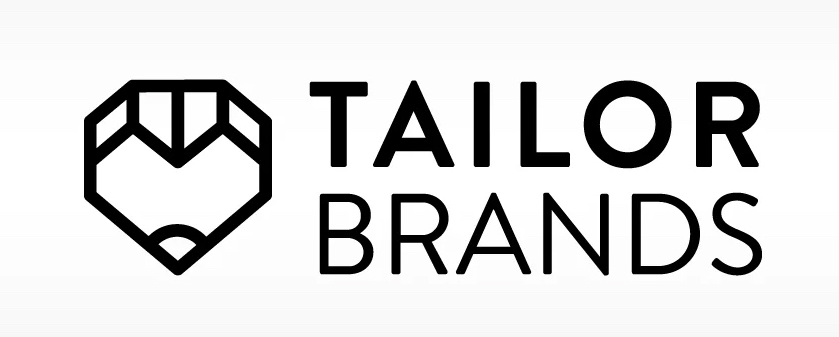
Tailor Brands provides entrepreneurs with a straightforward online platform to swiftly and effortlessly register their businesses. Their service offers a clear step-by-step process, leading users through the legal obligations and essential paperwork to establish their business as a distinct legal entity.
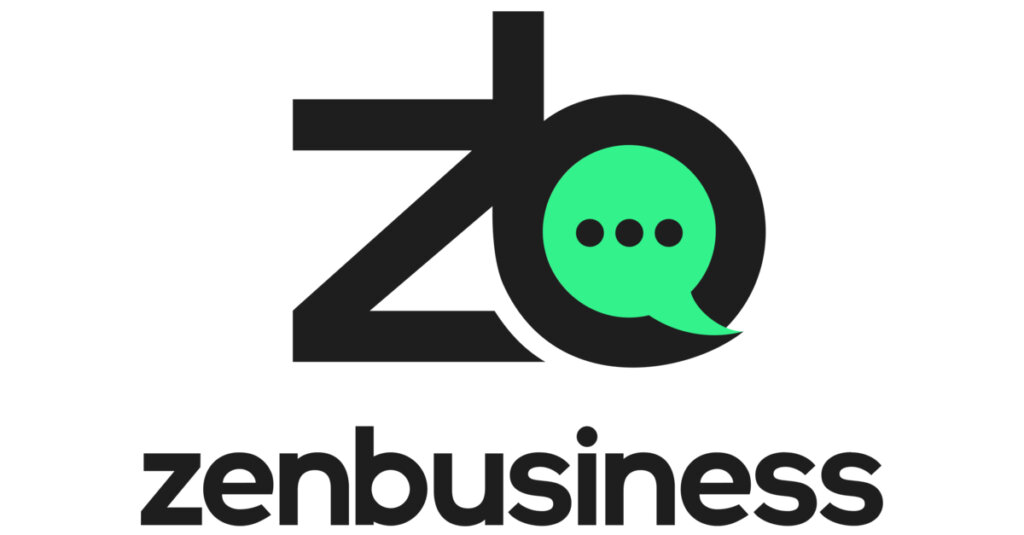
ZenBusiness earns its reputation as a top registration service by offering swift business filing and affordable incorporation. Throughout the process, its customer support is available for any queries, though they cannot provide legal guidance.
Starting a business might seem straightforward compared to sustaining it. ZenBusiness provides tools to simplify management, assisting with tax paperwork and serving as a registered agent.

Northwest Registered Agent is known for its company registration service. It emphasizes transparency and values treating customers well. The service openly shares its pricing and prioritizes high-quality customer support for accuracy.
5 Reasons to Start a Blog and Is It Worth It?
Many individuals begin blogs for different purposes, indicating that blogging remains valuable. These purposes encompass a range of motivations.
01. Share your ideas with the world
A blog provides a platform for expressing yourself and sharing your thoughts with the world. It’s your own space where you can showcase your creativity, expertise, and experiences in a way that reflects your unique personality.
02. Promote a product or service
Blogging for business engages potential customers and offers more product or service details. Blogging also improves a website’s SEO.
03. Build your brand
A blog lets you display what you know and can do, showing you’re an expert and gaining trust from your readers. According to Ophyr Hanan, Blog Growth and SEO Outreach Specialist at Wix, “Working together on content can help establish you as a thought leader in your field.”
04. Earn income
Consistently publishing high-quality blog posts over time can lead to profitability. By attracting new readers and increasing website traffic, you can attract advertisers and enhance your reputation as an online influencer. This creates opportunities for affiliate marketing.
05. Build a community
The internet enables connection regardless of location. A blog, within a larger community, provides a platform to share stories and ideas globally. Blogs often feature comment sections for direct reader engagement, fostering relationships.
>> Start a Blogging Business With Tailor Brands >>
Misconceptions About Blogs
Starting a profitable blog doesn’t require fame. Anyone can start, regardless of experience. Below are common misconceptions about beginning a blog:
Blogging Is Expensive
Starting a blog costs nothing if you have the internet. Even if you opt to buy a custom site, domain, or photos, these expenses are small compared to potential earnings.
Blogging Is a Dying Medium
Blogging remains relevant despite increased competition. While it’s more crowded than before, success is still achievable. Although launching a profitable blog may require extra work and investment now, it’s still worth considering.
Every Blog Post Needs to Be Perfect
Publish blog articles that you’re proud of. Don’t let fear of content not being “good” enough or “perfect” enough hold you back. Blogs are editable. If you’re not satisfied after it’s live, you can go back and change it.
You Need to Have an Existing Following to Start a Blog
Starting a blog doesn’t require celebrity status or a big social media following. Joy Cho, Carly Riordan, and Blair Eadie weren’t well-known until they began blogging.
Blogging Is Easy
Writing a blog might appear simple at first glance: write, publish, done. However, without a team or outsourcing, blogging entails more than just writing. Depending on your niche, you may need to research extensively or create additional assets like photos or videos. Blogging isn’t always effortless, but it can still be fulfilling.
Blogging Is a Fast Way to Earn Money
Though blogging can generate income, it won’t lead to quick wealth. First, you must cultivate an audience interested in buying from you before seeing any earnings.
3 Reasons You Should Not Start a Blog
Consider these reasons to avoid starting a blog. Remember, they’re just opinions.
- Money. Starting a blog solely for making money isn’t the right approach. Focus instead on the passion and fulfillment it brings. Just like Jimi Hendrix didn’t start playing guitar for income, prioritize your love for it first.
- Notoriety. Instant internet fame isn’t guaranteed. Instead, concentrate on crafting unique, engaging content. By sharing a meaningful message and putting in dedicated effort, popularity may naturally follow over time.
- Traffic. Initially, don’t stress about attracting large numbers of readers. Instead, prioritize creating valuable content that addresses people’s needs. Concentrate on adding value rather than solely aiming to boost traffic.
All these scenarios are possible. You might earn a steady income from blogging alone. However, if these are your only motivations, blogging will feel like work. Without genuine passion, you’ll likely grow unhappy or fail. Instead, pursue blogging out of genuine passion.
Start a Blog – FAQ
Bottom Line
Starting a blog can offer enlightenment, enjoyment, and a chance to make money while connecting with people. Running a blog involves taking on various roles, but if you’re willing to adapt and develop in a dynamic environment, you’ll probably find satisfaction and achieve your goals.
 Sections of this topic
Sections of this topic
